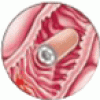More articles from Review
- An appropriate diagnostic workup for suspected vascular birthmarks
Some birthmarks can represent significant vascular anomalies that require a diagnostic workup and treatment.
- Six strategies to identify and assist patients burdened by out-of-pocket prescription costs
As many as one in five people report that they did not fill a prescription in the previous year because of the cost. Physicians can help by asking about the problem and applying simple strategies to limit the patient’s costs.
- Video capsule endoscopy: A voyage beyond the end of the scope
A tiny ingestible video camera can image the entire length of the small intestine, formerly the black box of the gastrointestinal system.
- Strengthening the standards for preventing heart disease and stroke: The recent AHA guidelines
New guidelines call for managing risk factors more aggressively than ever before, especially in people at high risk.
- Premenstrual dysphoric disorder: A review for the treating practitioner
There are a variety of treatments for this severe form of premenstrual syndrome. Caution is needed with alternative therapies.
- Recent trials of antioxidant therapy: What should we be telling our patients?
Evidence does not support the indiscriminate use of vitamins A, C, or E or beta carotene to prevent or reduce cardiovascular disease.
- Hypoglycemia in diabetes: Common, often unrecognized
Intensive diabetes control is beneficial but increases the risk of hypoglycemia. Over time, patients may lose the ability to sense hypoglycemia, increasing their risk.
- Perioperative nutrition support: Who and how
Although nutrition support can decrease postoperative morbidity and mortality, some patients do worse with total parenteral nutrition than with standard care.
- Head injury: Which patients need imaging? Which test is best?
There is often uncertainty about which patients with a head injury need an imaging test, especially if the injury appears to be minor.
- Fish oil supplementation: Evidence for health benefits
We have solid and compelling evidence that two long-chain omega-3 fatty acids help prevent coronary heart disease.


